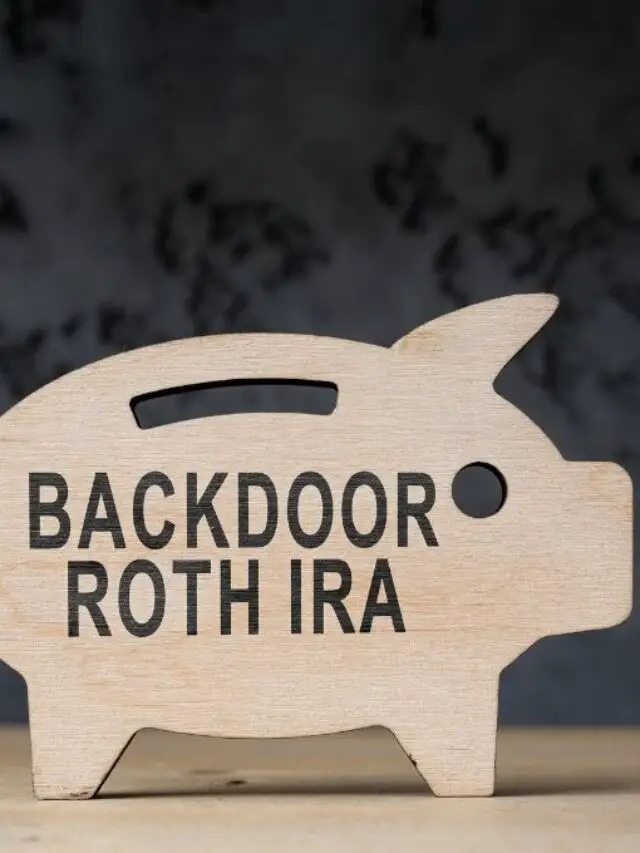So, you’re amped to venture into the realm of real estate investing? Here’s the nitty-gritty: Real Estate Investing for Beginners isn’t just about throwing your hard-earned bucks at the first property that makes your heart skip a beat. Nay, achieving true financial robustness in this domain entails a tactical mindset. What’s the roadmap, you ask? Multiple strategies are awaiting your perusal. This article will unfurl five such avenues that have garnered acclaim among both greenhorns and veteran investors.
Table of Contents
| ✅ Learn More: | Real Estate Investing for Beginners: Best 8 Nifty Ways to Turn $1,000 into a Goldmine |
The Basics of Real Estate Investing for Beginners
Ah, real estate. Just hearing it conjures visions of opulent penthouses or cozy bungalows. But hold your horses! Property investment for beginners isn’t merely a dreamy far-off concept; it’s an asset class begging for your keen attention. Unlike the enigmatic world of stocks and bonds, real estate stands in the physical realm. You can see it, touch it, and heck, even dwell in it. But don’t let this tangible asset fool you; numerous expenditures lurk in the shadows—closing costs, upkeep, and that ever-daunting mortgage.

Key Terminology to Decode
- ROI (Return on Investment): Here’s your formula: ROI = (Net Profit/Cost of Investment) x 100. The result? A percentage showing the chunk of your investment that’s come back to you.
- Cap Rate: Essentially, it’s the Net Operating Income divided by the property’s present market value. The higher the cap rate, the better your investment.
Grasping these metrics is paramount. Imagine setting sail in turbulent waters without a compass—that’s you investing in real estate sans calculations.
Strategy 1: Buy and Hold Real Estate
Settling in for the long haul? The ‘Buy and Hold’ strategy holds legendary status in the annals of real estate investing 101. Particularly recommended for beginners, this approach stands as the cornerstone in the basics of investing in real estate.
How to Implement Buy and Hold in Detail
Step 1: Scour Locations
- Don’t just seek a place; unearth an area where property values are on a steady incline. Research is king. Local amenities, crime rates, and school rankings can influence property value.
Step 2: Assess Property Condition
- The property might look good from afar, but a closer inspection can reveal hidden repair costs. Maybe there’s a shaky foundation or plumbing issues? Always get a property inspection before making any commitments.
Step 3: Nail Down the Expenses
- Monthly expenditures aren’t just about mortgage payments. Factor in the upkeep, property tax, and even homeowner association fees if applicable. Keep your calculator close and your financial advisor closer.
Step 4: Renting Out
- Ah, the passive income dream! Find reliable tenants to offset the monthly expenses. Keep an eye on the local rental market to set a competitive price.
Benefits
- Solid long-term gains
- A reliable stream of rental income
- Sweet tax incentives
Drawbacks
- The property’s illiquidity
- Unavoidable maintenance expenditures
- The market’s occasional temper tantrums
Strategy 2: Flipping Properties
Turn on any late-night cable channel and you’re bound to find someone waxing eloquent about flipping properties. In the labyrinth of Real Estate Investing for Beginners, this strategy stands as a beacon for those with an appetite for quick gains. What does flipping mean? Buy low, sell high, and don’t dawdle. Purchase a dilapidated property, jazz it up with renovations, and unload it for a profit—often in less than a year. However, this venture isn’t devoid of risks; flipping properties is a high-stakes game.
How to Implement Flipping Properties in Detail
Step 1: Reconnaissance
- Your first mission is reconnaissance. Sniff out undervalued properties in burgeoning neighborhoods. The key word here is potential—hidden gems that others overlook.
Step 2: Budgetary Balancing Act
- Next, you’re playing with numbers. Outline all costs for renovation, purchase, and eventual sale. If the numbers don’t align like stars in a constellation, step back.
Step 3: Rapid Renovation
- Speed is the name of the game. The quicker you renovate, the sooner you can sell, maximizing your profit margin. Employ trustworthy contractors and keep a watchful eye on the progress.
Step 4: The Grand Sale
- Time to put your sales hat on. Price the property effectively—neither too low to incur a loss nor too high to deter potential buyers.
Pros and Cons
- Upsides: Quick profits and the joy of transformation.
- Downsides: Capital-intensive and risk-laden.

Strategy 3: Real Estate Crowdfunding
For those tiptoeing into the realm of real estate investing for beginners, real estate crowdfunding offers an intriguing pathway. No longer are the doors of investment only flung open for the well-heeled. Thanks to technology, even those with a smidgen of spare change can own a slice of prime property. What’s the catch? Your money’s locked into a project along with funds from a myriad of other investors.
How to Embark on Real Estate Crowdfunding
Step 1: Platform Picking
- Choose a crowdfunding platform known for reliability. Read reviews, verify credentials, and scrutinize past projects.
Step 2: Project Perusal
- Various projects will be displayed like items on a menu. Choose one that aligns with your risk appetite and investment duration.
Step 3: Invest and Monitor
- Once invested, your role morphs into that of a keen observer. Monitor project updates and keep tabs on your expected returns.
Advantages and Disadvantages
- Advantages: Low entry cost, diversification.
- Disadvantages: Lower control, money tied up for longer periods.
Strategy 4: Investing in Rental Properties 101
Ah, rental properties—a classic rite of passage in the real estate investing for beginners guide. Investing in rental properties 101 is like having your cake and eating it too, minus the sugar rush and subsequent crash. Essentially, you snag a property and rent it out, relishing in the recurring revenue. Sounds like a walk in the park? It’s more like a marathon.
Investing in Rental Properties: The Nitty-Gritty
Step 1: Location, Location, Location
- Isn’t that the age-old adage? Consider locales that offer a blend of affordability for you and desirability for tenants. Prime spots have high walkability, splendid schools, and bang-up public transport.
Step 2: Financing Your Fortress
- While cash is king, most budding barons use financing. Options abound—conventional loans, FHA loans, or even angel investors. Line up your ducks before you plunge in.
Step 3: Run the Numbers… Twice
- Cash flow is your lifeblood. Calculate your potential ROI, the cap rate, and don’t forget to factor in vacancies. The arithmetic is unforgiving if botched.
Step 4: The Tenant Tango
- A top-notch tenant equals a tranquil life. Thorough vetting should precede any handing over of keys. Do background checks, credit checks, and employ a smidgeon of gut feeling.
Ups and Downs
- Ups: Continuous income, property appreciation.
- Downs: Periods of vacancy, potential for costly repairs.
Strategy 5: Wholesaling for Wunderkinds
New to the fray and don’t want to deal with tenants or toilets? Welcome to wholesaling, the ultimate gateway strategy for real estate investing for beginners. Imagine yourself as a middleman who finds undervalued properties and passes them to investors for a juicy finder’s fee. No need to own property or get your hands dirty.
Wholesaling Step-by-Step
Step 1: Market Mastery
- Immerse yourself in real estate listings, auctions, and estate sales. The goal? Spot undervalued properties that have been shrugged off by others.
Step 2: Build Investor Network
- A robust rolodex of eager investors is your secret weapon. Start networking yesterday, if possible!
Step 3: Contract Craftsmanship
- Pen contracts that give you the option to buy properties but also allow you to transfer that option to an investor.
Step 4: Pocket the Profit
- Once you connect buyer and seller, you skip away with a finder’s fee. Ah, the sweet smell of quick cash!
Pros and Cons
- Pros: Quick returns, low upfront costs.
- Cons: Requires in-depth market knowledge, deals can go sideways.
Conclusion: Roadmap to Real Estate Success
Now that we’ve traipsed through this extensive catalogue of options—from flipping and crowdfunding to rental real estate and wholesaling—let’s not forget the essence of our journey: choice. Real Estate Investing for Beginners doesn’t follow a one-size-fits-all rule. Your pathway should be paved with individual goals, risk tolerance, and investment capital.
Additional Resources
Hungry for more? Here’s a smorgasbord of resources to tickle your real estate fancy:
- Books like The Beginner’s Guide to Wholesaling Real Estate and Commercial Real Estate Investing 101
- Podcasts covering the basics of investing in real estate.
- Reddit forums like r/RealEstateInvesting for a communal dose of tips and tales.
Call to Action
Feel inspired to kickstart your real estate investing for beginners? Don’t just sit there like a deer caught in headlights. Act. Make your first move—whether that’s scouting locations, securing financing, or simply educating yourself.
Frequently Asked Questions (FAQs)
- What is the safest real estate investment strategy for beginners?
Rental properties generally offer lower risk compared to flipping or wholesaling. - How can I invest with limited capital?
Real estate crowdfunding platforms offer lower investment thresholds. - What’s the best source for market research?
Utilize real estate platforms, consult real estate agents, and immerse yourself in local news. - Is commercial real estate investing 101 similar to residential investing?
Both have unique risks and rewards. Commercial typically involves longer leases but also has higher upfront costs. - How do I calculate ROI on rental property for beginners?
ROI = (Annual rental income – Expenses) / Property Cost - Do all investment properties require 20% down payment?
No, options like FHA loans can offer lower down payments. - What are cap rates and how do they matter?
Cap rates offer a snapshot of potential profitability. - How can technology aid my real estate investment?
Apps and platforms offer real-time market analytics and investment options. - Can I invest in international real estate as a beginner?
It’s possible, but added complexities like currency exchange and legal regulations should be considered. - Should I diversify my real estate investment portfolio?
It’s recommended to distribute risks and potentially maximize rewards.
And there we are! Our gallivant through the best strategies for real estate investing for beginners, teeming with stops, detours, and revelations, reaches its culmination. Dare to plunge in, my aspiring moguls, and may the real estate gods shower riches upon you!

Prashant Chauhan
Author @ Finance RuffleMeet Prashant Pratap Chauhan, the savvy founder behind Finance Ruffle, a hub for sharp financial insights and expert analysis in the realm of finance blogging.










Pingback: Investing In Stocks In Stock Market: 6 Superb Tactics For Higher Returns | Finance Ruffle
Pingback: Explore 2024’s 6 Best First-Time Home Buyer Loans And Programs: Your Quintessential Guide | Finance Ruffle
Pingback: Discover The Best Way To Start Passive Income In 2024: 7-Step Guide For Residual Income | Finance Ruffle
Pingback: 15 Best Construction Side Hustles In 2024: Unleash Your Earning Potential | Finance Ruffle
Pingback: Real Estate Investing For Beginners: Best 8 Nifty Ways To Turn $1,000 Into A Goldmine | Finance Ruffle
Pingback: The Insider’s Guide To Mortgage Interest Credit: 9 Super Insights | Finance Ruffle